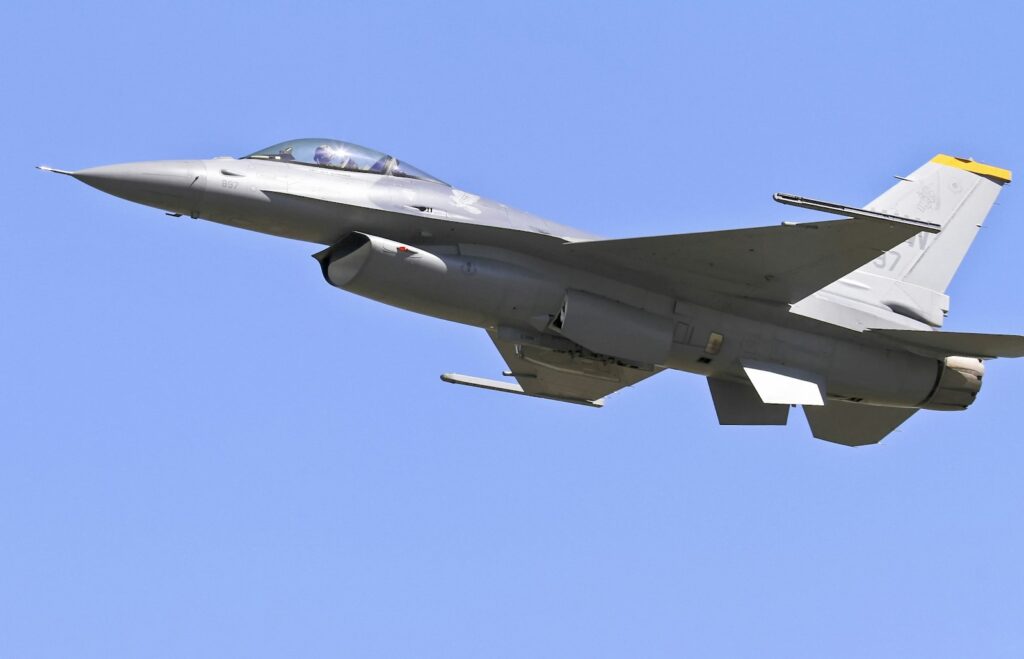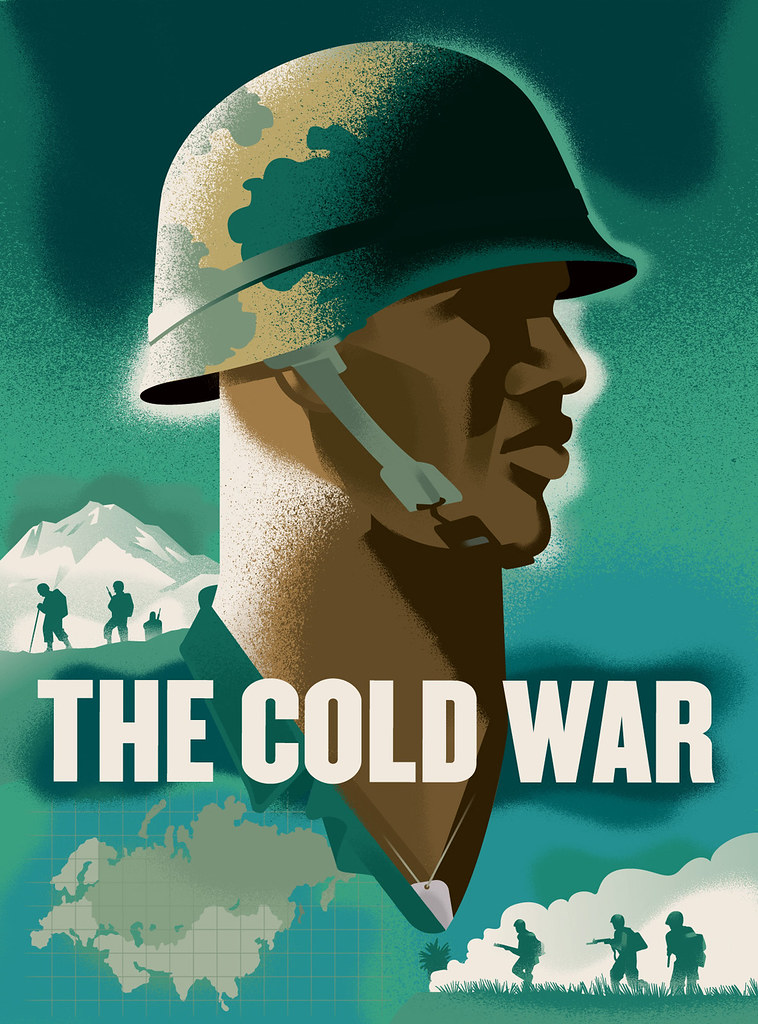
The Cold War wasn’t merely a geopolitical standoff; it was a high-stakes chess game played in the shadows, a relentless struggle for information and control where every secret gained could tip the balance of power. This era of tension between the U.S. and the Soviet Union necessitated an unprecedented investment in espionage, leading to an arsenal of ingenious tools designed to outwit adversaries. Far from the romanticized portrayals often seen in cinema, the reality of Cold War spycraft was a dangerous cat-and-mouse game, where agents faced grim prospects if compromised, making their reliance on cutting-edge technology not just a luxury, but a matter of survival.
Both the U.S. and the U.S.S.R. deployed extensive networks of spies, supplemented by a remarkable array of innovative gadgets and devices. This was new territory, ripe for innovation, as intelligence agencies from the CIA to the KGB pushed the boundaries of what was technologically possible. The ingenuity displayed in these tools, from hidden cameras to concealed weapons and sophisticated communication devices, symbolizes the creativity and pervasive paranoia of an era defined by its secrecy.
As we delve into this clandestine world, we’ll explore some of the most impressive and transformative spy gadgets from the Cold War era. These devices, now iconic historical artifacts, are not just relics of the past; they represent pivotal advancements in covert operations, each telling a story of daring intelligence gathering, silent assassinations, and the desperate measures taken to secure strategic advantage. Join us on a journey through these remarkable innovations that redefined the art of espionage.
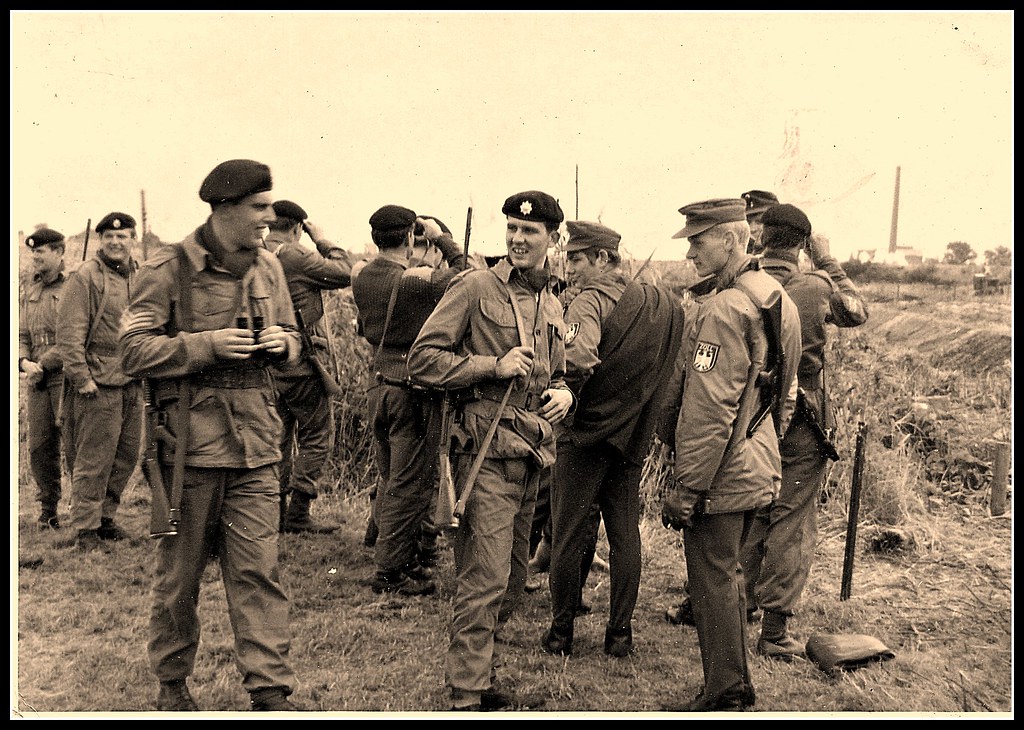
1. **The 5-Second Mask**One of the most astonishing innovations to emerge from the Cold War’s clandestine laboratories was the “5-second mask,” a rapid disguise solution that dramatically altered an agent’s appearance within moments. The Central Intelligence Agency (CIA) recognized the critical need for field agents to blend seamlessly into their surroundings and vanish without a trace, often necessitating multiple identity changes in a single mission. This led to the creation of a specialized role, the ‘Chief of Disguise,’ a position famously held by Jonna Mendez, who later chronicled her experiences in spycraft.
One of the most astonishing innovations to emerge from the Cold War’s clandestine laboratories was the “5-second mask,” a rapid disguise solution that dramatically altered an agent’s appearance within moments. The Central Intelligence Agency (CIA) recognized the critical need for field agents to blend seamlessly into their surroundings and vanish without a trace, often necessitating multiple identity changes in a single mission. This led to the creation of a specialized role, the ‘Chief of Disguise,’ a position famously held by Jonna Mendez, who later chronicled her experiences in spycraft.
Traditional Hollywood prosthetics, while realistic, were entirely impractical for field use, requiring hours of meticulous application that could prove fatal in high-stakes situations. Mendez and her team collaborated with the very special effects experts responsible for the iconic masks in “Planet of the Apes,” pushing the boundaries of disguise technology. Their goal was to design enhanced disguises that could be applied without the need for adjustments or a mirror, perfectly adhering to the wearer’s face in the blink of an eye.
The resulting 5-second mask was a marvel of custom-molded design, capable of completely transforming an agent’s facial features and overall structure. Its ingenious construction allowed for instantaneous application, enabling an operative to don a new face while walking down a busy street. Following the transformation, the mask could be quickly slipped into a coat pocket or concealed within a rolled newspaper, allowing for multiple identity alterations within the span of a single block. This rapid disguise solution offered an unparalleled advantage, ensuring agents could maintain their cover or make a swift escape, embodying the era’s relentless pursuit of operational agility.
Read more about: Unlock a Stronger Core: 12 No-Equipment Exercises for Stability and Strength in Just Minutes a Day
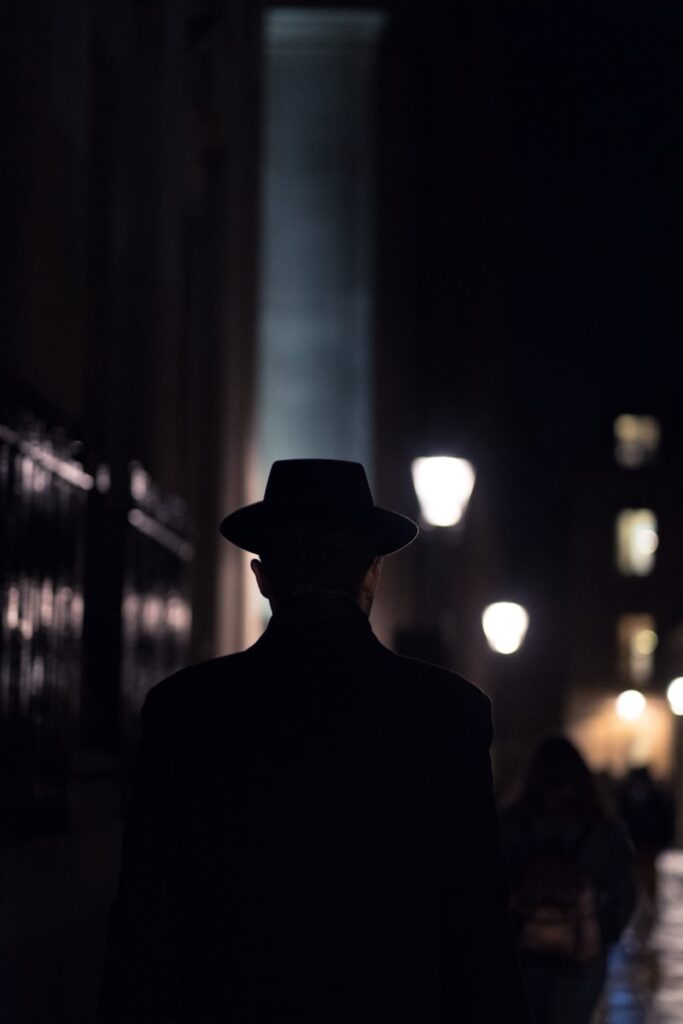
2. **The Umbrella Gun**The weaponized umbrella is a classic element of spy lore, a device that has captivated the public imagination and permeated pop culture, even featuring as the signature weapon of fictional villains like Batman’s Penguin. However, the genesis of this cinematic trope lies in a chilling reality: the real-life assassination of Georgi Markov, a Bulgarian reporter who had defected to the United Kingdom and become an outspoken critic of communism. His outspoken stance made him a target, culminating in a fatal encounter that cemented the umbrella gun’s place in the annals of espionage history.
The weaponized umbrella is a classic element of spy lore, a device that has captivated the public imagination and permeated pop culture, even featuring as the signature weapon of fictional villains like Batman’s Penguin. However, the genesis of this cinematic trope lies in a chilling reality: the real-life assassination of Georgi Markov, a Bulgarian reporter who had defected to the United Kingdom and become an outspoken critic of communism. His outspoken stance made him a target, culminating in a fatal encounter that cemented the umbrella gun’s place in the annals of espionage history.
On September 7, 1978, while walking down a London street, Markov felt a sharp pain in his leg, an incident he initially dismissed as random. A man behind him picked up his umbrella, apologized, and swiftly departed in a nearby cab, leaving Markov none the wiser about the true nature of their interaction. It wasn’t until he fell gravely ill and recounted the seemingly innocuous encounter from his hospital bed that investigators determined he had been poisoned by a spy wielding an umbrella gun.
The seemingly ordinary umbrella had been ingeniously weaponized to fire a tiny pellet filled with ricin poison, delivered with enough force to breach the skin. The gun itself didn’t need to be powerful; its lethality stemmed from the minute dose of fast-acting toxin it delivered. The umbrella gun proved an exceptionally effective assassination tool precisely because of its inconspicuous nature. It could be carried openly in most cities without attracting any undue attention, and its deployment was quick and discreet, allowing the perpetrator to vanish almost immediately after the act. This silent, undetectable method of assassination underscored the brutal effectiveness of Cold War covert operations.
Read more about: Honestly, What Happened To Them? 15 Iconic Special Effects From Old Films That We Forgot Still Astound Us.
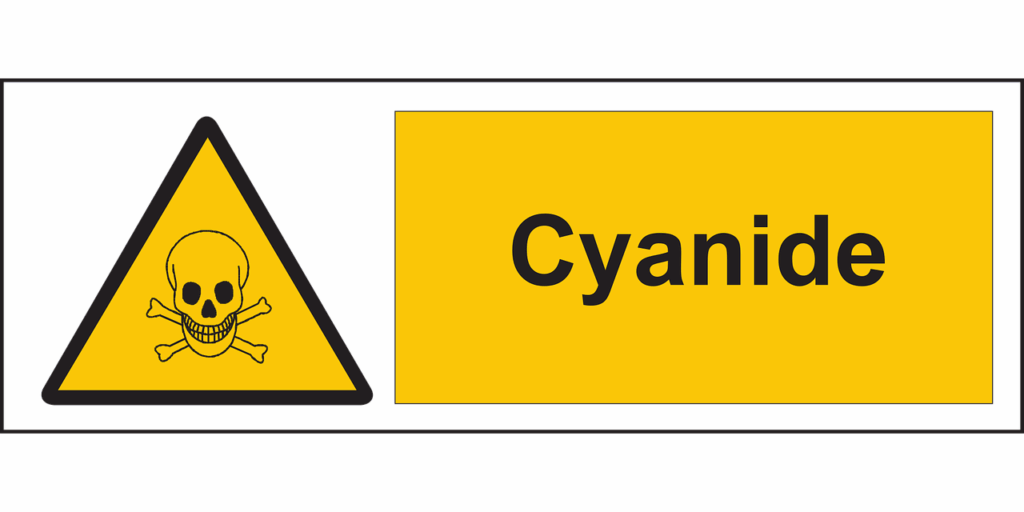
3. **Cyanide Glasses**The grim realities of Cold War espionage meant that captured agents faced excruciating prospects. Their home countries could not openly demand their return, and they were often subjected to extremely traumatic interrogations. Given that the Geneva Convention, which forbids torture, was not signed until after the Cold War began, such practices were tragically common during the earlier period. Without hope of rescue and only torture to anticipate, many spies were equipped with hidden cyanide pills, a last-resort measure to maintain control over their fate.
The grim realities of Cold War espionage meant that captured agents faced excruciating prospects. Their home countries could not openly demand their return, and they were often subjected to extremely traumatic interrogations. Given that the Geneva Convention, which forbids torture, was not signed until after the Cold War began, such practices were tragically common during the earlier period. Without hope of rescue and only torture to anticipate, many spies were equipped with hidden cyanide pills, a last-resort measure to maintain control over their fate.
Concealing a lethal, fast-acting poison that could kill the user in minutes posed a significant challenge, as agents needed it to be accessible even if thoroughly searched. While urban legends spoke of cyanide pills hidden in false teeth, the context clarifies that such a dangerous storage method in the mouth was too risky and lacks historical evidence. Instead, intelligence agencies devised more ingenious hiding spots, prioritizing both accessibility and secrecy. One particularly innovative solution was the integration of cyanide capsules into a seemingly ordinary pair of eyeglasses.
These specially designed glasses appeared entirely normal, indistinguishable from any other pair. However, in dire situations, an agent could discreetly chew on the end of the glasses’ arm to access and ingest the hidden cyanide capsule. This grim innovation allowed operatives to take their own lives swiftly, preventing them from betraying critical information under duduress or enduring prolonged torment. The cyanide glasses stand as a stark reminder of the extreme pressures and ultimate sacrifices demanded of spies operating in the Cold War’s unforgiving clandestine landscape, embodying the lengths to which agents were prepared to go to protect their missions and their identities.
Read more about: How Well Do YOU Remember the ’70s? Answer These Real ‘Jeopardy’ Moments to Find Out!
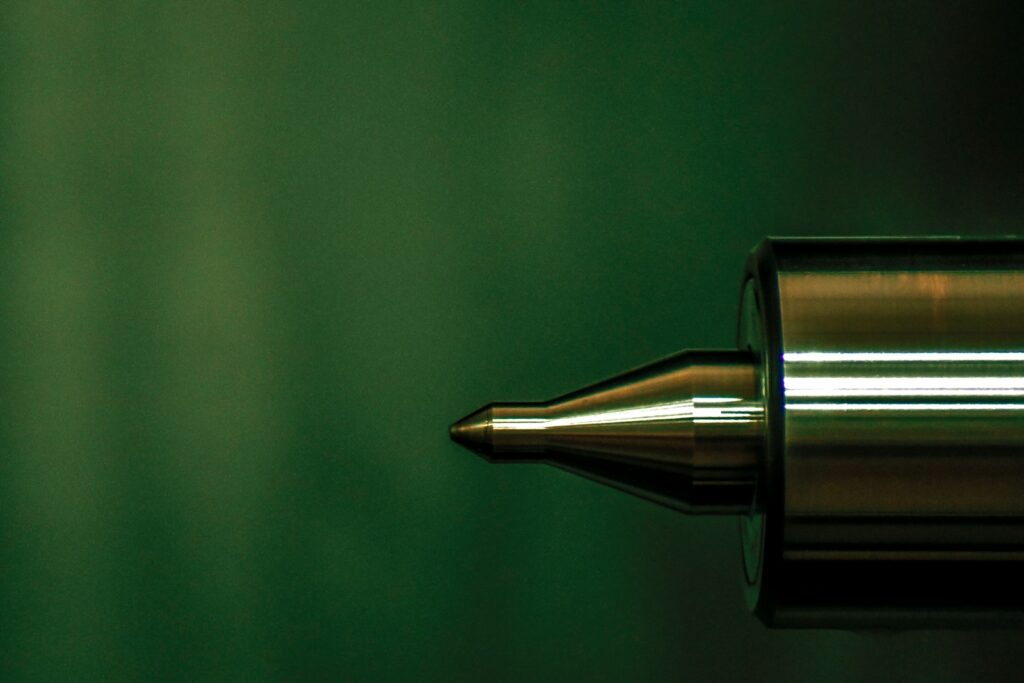
4. **The Lipstick Pistol**The “lipstick pistol,” famously nicknamed the “kiss of death,” is one of the most iconic and legitimate spy tools to emerge from the Cold War, often associated with the allure of femme fatales in fiction. This ingenious weapon directly addressed the reality that espionage was not an exclusively male domain; many women were recruited as spies by agencies like the KGB, necessitating discrete means for self-defense or target assassination that blended seamlessly into their daily lives. The weapon’s existence was first discovered in 1965 at a U.S. checkpoint in West Berlin, revealing a chilling example of Soviet espionage ingenuity.
The “lipstick pistol,” famously nicknamed the “kiss of death,” is one of the most iconic and legitimate spy tools to emerge from the Cold War, often associated with the allure of femme fatales in fiction. This ingenious weapon directly addressed the reality that espionage was not an exclusively male domain; many women were recruited as spies by agencies like the KGB, necessitating discrete means for self-defense or target assassination that blended seamlessly into their daily lives. The weapon’s existence was first discovered in 1965 at a U.S. checkpoint in West Berlin, revealing a chilling example of Soviet espionage ingenuity.
Designed to look precisely like an ordinary tube of lipstick, this compact device concealed a single bullet round instead of makeup. Its barrel opening could even be hidden by a wedge of actual lipstick, rendering it virtually undetectable upon casual inspection. To activate the pistol, it would be pressed against the target, triggering a spring-loaded firing mechanism. When the internal spring was compressed, it packed just enough punch to release and strike the round’s primer, firing the single bullet. The process was silent and discreet, designed for point-blank range encounters.
As a single-shot weapon, the lipstick pistol was inherently a last-resort device, intended for critical situations where an agent’s life or mission was at immediate risk. While official stories of its field use or high-profile cases are not publicly available, its very existence highlights the meticulous detail and cunning employed in equipping female operatives. This blend of mundane disguise and lethal capability made the lipstick pistol a potent symbol of covert power, reflecting a period where ingenuity in weapon concealment was paramount, blurring the lines between everyday objects and deadly tools in the clandestine world.
Read more about: Your Favorite Y2K Styles Are Back: How Gen Z Is Rocking the Early 2000s (and Why You’ll Love It Too)
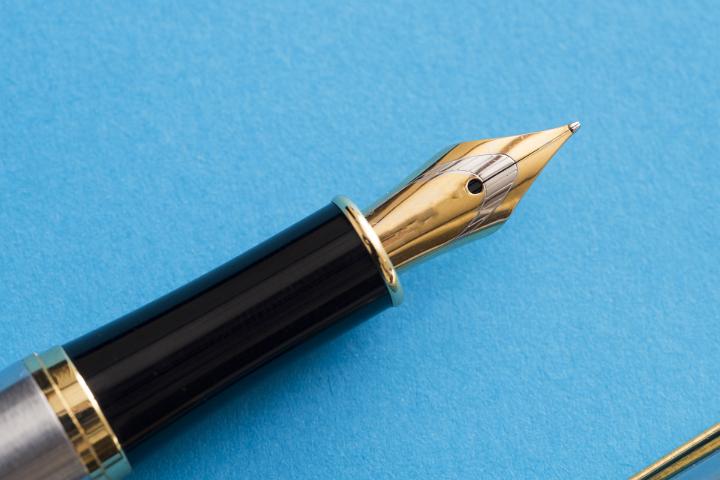
5. **Disappearing Ink Pen**Disappearing ink, a common novelty item found in joke and magic shops today, boasts a surprisingly rich historical lineage rooted deeply in the art of secret communication. Far from being a mere gag, various types of disappearing inks were vital tools for encoding messages during the Cold War era, providing a means to hide sensitive information in plain sight. These inks possessed unique chemical properties that allowed them to become invisible after application, only to reappear under specific conditions, making them ideal for clandestine correspondence.
Disappearing ink, a common novelty item found in joke and magic shops today, boasts a surprisingly rich historical lineage rooted deeply in the art of secret communication. Far from being a mere gag, various types of disappearing inks were vital tools for encoding messages during the Cold War era, providing a means to hide sensitive information in plain sight. These inks possessed unique chemical properties that allowed them to become invisible after application, only to reappear under specific conditions, making them ideal for clandestine correspondence.
Throughout the Cold War, the challenge lay in the constant adaptation required to stay ahead, as widespread awareness of once-successful concealment methods necessitated continuous innovation. Earlier methods, such as wet-writing, were laborious, involving writing with ink, steaming the paper, letting it dry, re-steaming to remove indentations, and then writing an innocent message over the top. This time-consuming process was fraught with risks and inefficiencies, driving the search for more sophisticated solutions.
By the 1950s, more advanced techniques, including those developed by the KGB, became prevalent, moving beyond home-brewed inks. One popular method was dry transfer, a process akin to how credit card receipts work. An agent would write on a top layer, but instead of black ink, chemicals would transfer the message to the paper below, leaving an unmarked, dry sheet. Decoding these hidden messages could be equally complex, sometimes requiring several different chemicals applied in a specific order over several hours to reveal the encrypted text. The disappearing ink pen, in its various forms, exemplifies the endless ingenuity applied to information security, transforming a simple writing tool into a sophisticated instrument of secrecy.
Read more about: Mind-Boggling Heists: 11 Priceless Artworks That Vanished from the World’s Top Museums

6. **The Shoe Transmitter**The shoe transmitter stands as one of the most iconic innovations in the world of Cold War spy gear, a device that gave rise to the common trope in spy narratives where agents use electronic wands to detect “bugs” or wiretaps. This cinematic representation was, in fact, born from a very genuine concern within intelligence communities, where diplomats and operatives were trained to be perpetually vigilant and scrutinize anything out of the ordinary in their environments. When shoe transmitters first emerged, however, they caught the world entirely unprepared, redefining the parameters of surreptitious surveillance.
The shoe transmitter stands as one of the most iconic innovations in the world of Cold War spy gear, a device that gave rise to the common trope in spy narratives where agents use electronic wands to detect “bugs” or wiretaps. This cinematic representation was, in fact, born from a very genuine concern within intelligence communities, where diplomats and operatives were trained to be perpetually vigilant and scrutinize anything out of the ordinary in their environments. When shoe transmitters first emerged, however, they caught the world entirely unprepared, redefining the parameters of surreptitious surveillance.
The operational mechanism was ingeniously simple yet devastatingly effective. Individuals with access to a diplomat’s hotel room or living quarters would either install a miniature transmitter directly into the heel of a target’s shoe or, even more subtly, replace the target’s shoes with an identical pair already containing the concealed device. Once activated, these transmitters would silently capture any sounds or conversations within range, relaying them to a remote station for live monitoring or immediate recording. This meant that any confidential or official meeting could be compromised simply by someone wearing the bugged shoes unwittingly entering the room.
This practice became widespread during the Cold War, demonstrating the pervasive reach of covert listening operations. While shoes became the most iconic objects associated with these devices, the principle extended far beyond footwear. Transmitters were embedded in virtually anything large enough to accommodate a listening device, from lamps and smoke detectors to telephones and wristwatches. The shoe transmitter, therefore, represented not just a single gadget but a broader philosophy of transforming everyday objects into powerful instruments of espionage, making personal spaces permeable and trust a scarce commodity in the shadow wars.
Read more about: Unlock a Healthier You: 14 Profound Changes Your Body Experiences When You Go Alcohol-Free for 30 Days
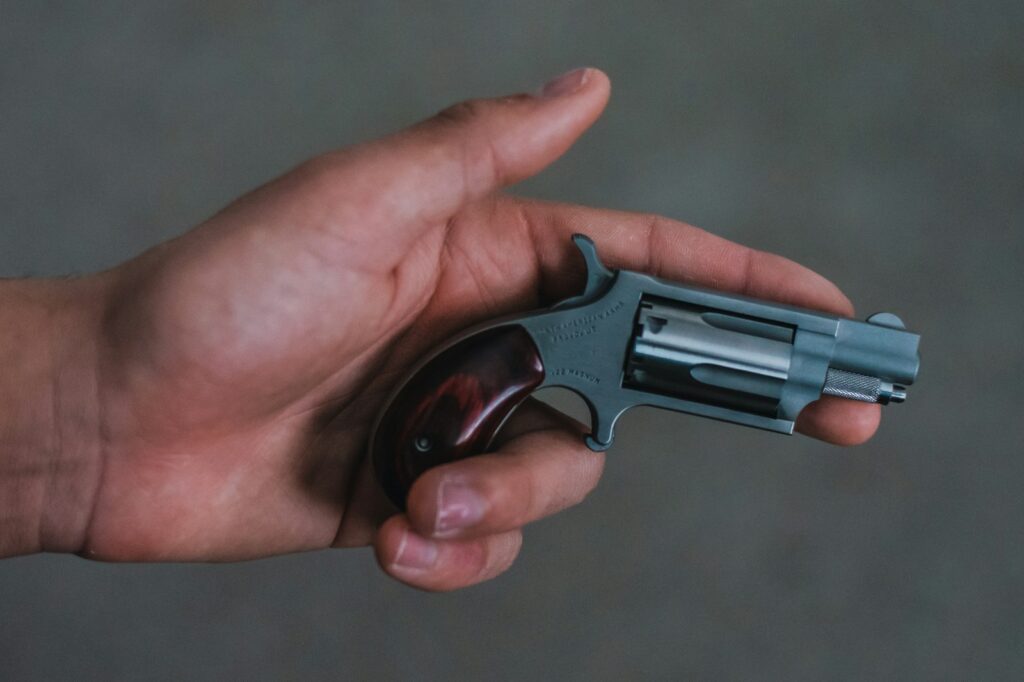
7. **Sedgley OSS .38 Glove Pistol**The Sedgley OSS .38 Glove Pistol epitomized the brutal pragmatism of close-quarters combat in espionage, designed for situations demanding immediate and decisive action. Conceived in Philadelphia by Stanley M. Height and specifically utilized by the Naval Intelligence Office during the Cold War, this concealed weapon was ingeniously integrated into a cowhide glove. The single-shot .38 caliber pistol was securely mounted to the back of the glove, intended to be worn with a long-sleeve garment to keep it entirely hidden from enemy sight, maintaining the element of surprise until the critical moment.
The Sedgley OSS .38 Glove Pistol epitomized the brutal pragmatism of close-quarters combat in espionage, designed for situations demanding immediate and decisive action. Conceived in Philadelphia by Stanley M. Height and specifically utilized by the Naval Intelligence Office during the Cold War, this concealed weapon was ingeniously integrated into a cowhide glove. The single-shot .38 caliber pistol was securely mounted to the back of the glove, intended to be worn with a long-sleeve garment to keep it entirely hidden from enemy sight, maintaining the element of surprise until the critical moment.
This innovative weapon enabled an agent to adopt a posture of vulnerability, feigning surrender by raising their hands, often behind their head, thereby concealing the small pistol from view. The psychological impact of such a ruse could disarm an adversary, drawing them closer into range. When the enemy was within striking distance, the agent could then activate the weapon by simply making a fist and punching the target. Upon target contact, a bullet would be fired at point-blank range, ensuring an instant and devastating impact.
The Sedgley OSS .38 Glove Pistol was a testament to the desperate inventiveness required for survival in the field. It provided a final, lethal option for agents caught in tight situations, allowing them to turn a perceived weakness into a decisive advantage. This gadget perfectly illustrates the Cold War’s demand for specialized tools that could transform ordinary gestures into deadly actions, offering a chilling glimpse into the ingenious methods devised for self-preservation and elimination in the shadowy world of intelligence operations.
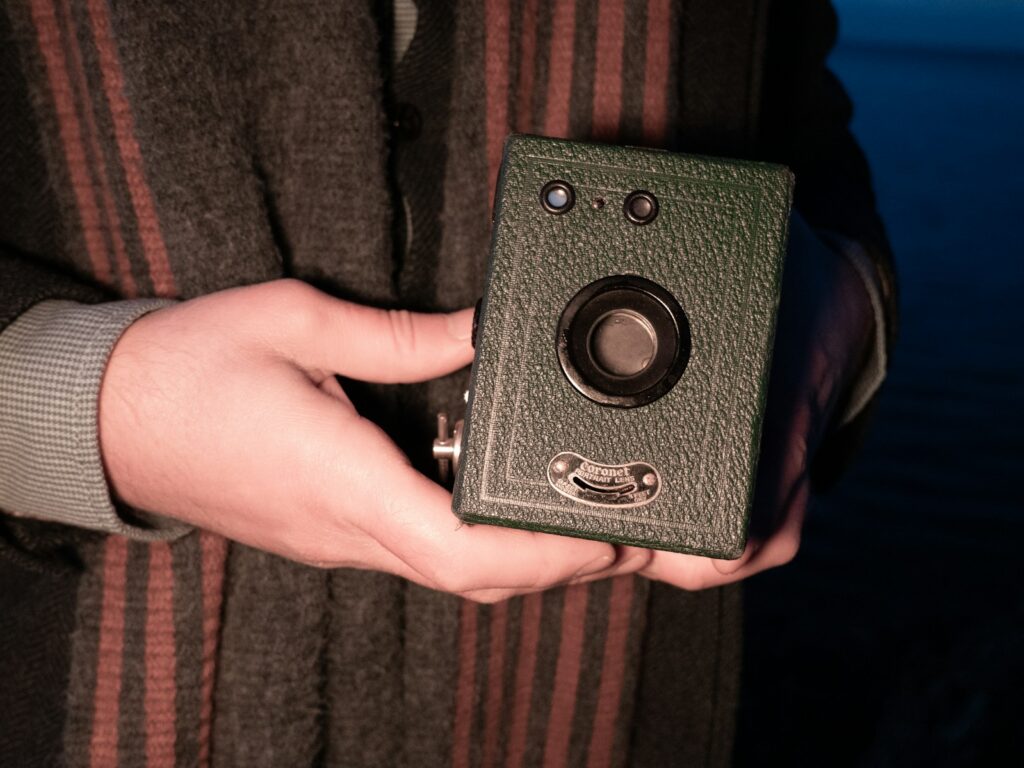
8. **“Matchbox” Camera**During the Cold War, the ability to discreetly capture visual intelligence was paramount, making spy cameras indispensable tools for agents operating behind enemy lines. While today almost everyone carries a high-definition digital camera in their pocket, film cameras of the Cold War era were typically large, often the size of a brick or even larger with attachments. This logistical challenge spurred government agencies to develop ingenious miniaturized solutions, leading to devices like the “Matchbox” camera, a marvel of compact engineering.
During the Cold War, the ability to discreetly capture visual intelligence was paramount, making spy cameras indispensable tools for agents operating behind enemy lines. While today almost everyone carries a high-definition digital camera in their pocket, film cameras of the Cold War era were typically large, often the size of a brick or even larger with attachments. This logistical challenge spurred government agencies to develop ingenious miniaturized solutions, leading to devices like the “Matchbox” camera, a marvel of compact engineering.
Developed by Eastman Kodak for the Office of Strategic Services (OSS), the precursor to the CIA, this miniature camera was precisely the size of a standard matchbox. Its compact dimensions were crucial, allowing it to be easily camouflaged with labels in different languages, making it appear as an ordinary, innocuous object in any setting. This level of disguise was vital; instead of attempting to steal secret documents or painstakingly copy them down, an agent could simply take a quick picture and leave the original, ensuring that no one would know information had been compromised or even that an operative had been present.
Miniature film cameras of the time faced several complex engineering challenges. They needed to be entirely self-contained and light-proof, house the film inside the casing, and incorporate a mechanism to wind it – without which the camera would be limited to a single shot. The “Matchbox” camera successfully overcame these hurdles, offering a powerful tool for covert photography that combined discretion with functional efficiency. It stands as a testament to the era’s relentless pursuit of miniaturization, transforming an everyday item into a potent instrument of intelligence gathering, capturing vital secrets without raising suspicion.”
Beyond the Obvious: Exploring Seven More Unconventional and Ingenious Devices that Shaped the Secret World of the Cold War, Highlighting Their Role in Intelligence Gathering and Covert Operations
Having explored some of the most dramatic and deadly instruments of Cold War espionage, our journey into this shadow world continues, revealing how ingenuity permeated even the most mundane objects. The era’s relentless pursuit of strategic advantage pushed technological boundaries far beyond overt weapon systems, leading to a fascinating array of devices designed to collect intelligence, communicate covertly, and ensure operational success. These gadgets underscore a fundamental truth of Cold War spycraft: every detail, no matter how small, could be turned into a tactical asset. As we delve deeper, we uncover how seemingly innocent items became powerful tools, blending seamlessly into everyday life while serving critical intelligence objectives.
From micro-radios disguised in smoking pipes to hidden cameras that transformed ordinary attire into surveillance platforms, the next seven gadgets exemplify the sophisticated thinking that defined a generation of covert operations. They represent not just engineering marvels, but also the cultural adaptations necessary for agents to operate undetected in a world fraught with suspicion. Each device tells a unique story of innovation, illustrating how the mundane was weaponized and how the art of secrecy was refined to an unprecedented degree. Join us as we shine a light on these remarkable, often overlooked, instruments that once held the balance of power in their discrete grasp.
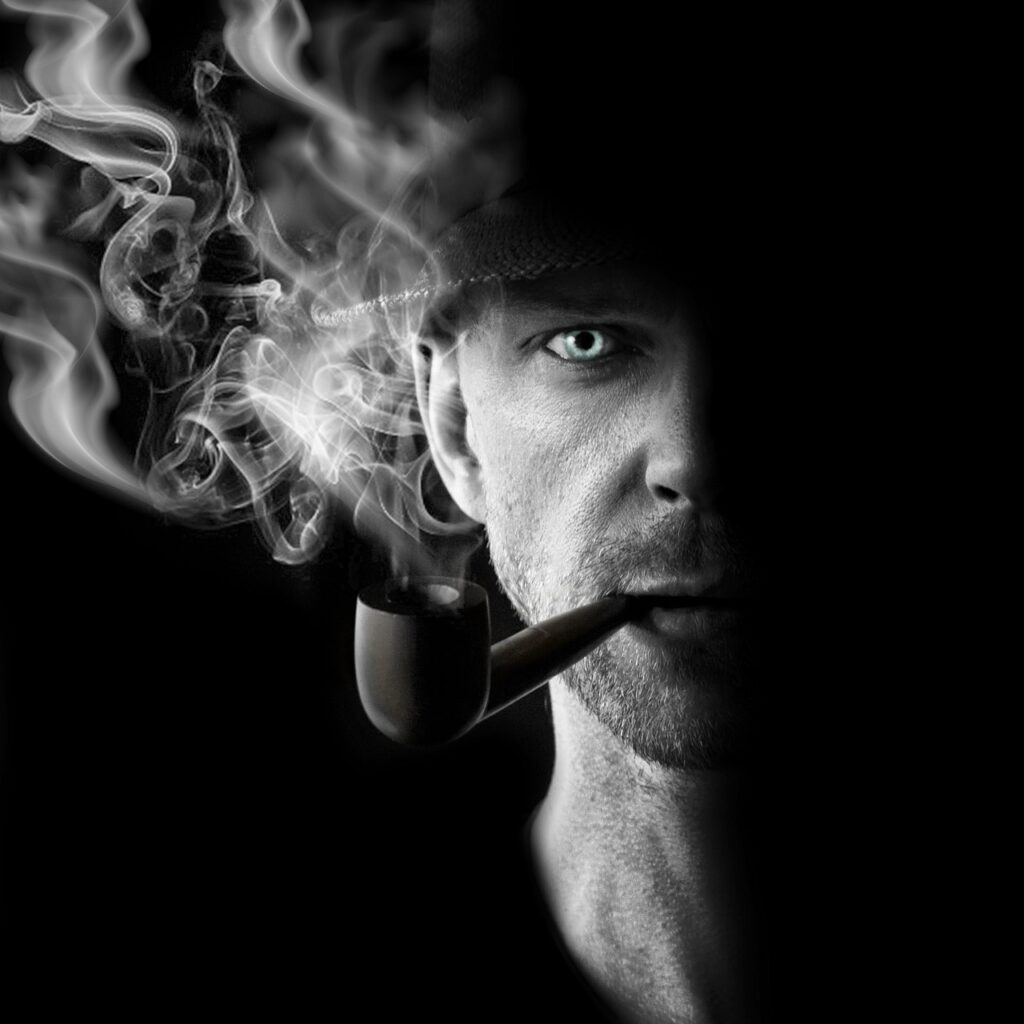
9. **The Pipe Radio**The image of a spy nonchalantly puffing on a pipe has long been a cinematic trope, yet during the Cold War, this seemingly innocuous habit concealed a cutting-edge piece of surveillance technology: the pipe radio. Far from a mere prop, this vintage pipe was ingeniously fitted with a micro-radio, transforming an everyday item into a discreet communication hub for agents in the field. Its design perfectly encapsulated the era’s imperative to blend advanced technology with mundane objects, ensuring that vital exchanges could occur without raising the slightest suspicion.
Agents could use this device to transmit conversations to other undercover operatives, facilitating real-time coordination and intelligence sharing that was critical in high-stakes environments. The challenge lay not just in miniaturizing the radio components but in embedding them so seamlessly that the pipe remained fully functional in appearance. This allowed an operative to appear engaged in a casual activity while secretly relaying crucial information, bypassing the need for more overt and detectable communication methods.
The strategic value of such a device cannot be overstated. In an age before widespread cellular networks, secure and instantaneous communication was a formidable hurdle for intelligence agencies. The pipe radio offered a solution that combined accessibility with exceptional stealth, enabling agents to maintain contact even in hostile territories or during critical phases of an operation. It represents a fascinating intersection of everyday cultural practices and advanced technological integration, providing a covert lifeline in a world defined by secrets.
Ultimately, the pipe radio stands as a testament to the persistent innovation in covert communication. It highlights the lengths to which intelligence agencies would go to equip their operatives with the means to gather and relay information under extreme pressure. This gadget was more than just a piece of hardware; it was an extension of the agent’s ability to operate in the shadows, turning a casual gesture into a strategic advantage.
Read more about: Unlock Warp Speed: 14 Simple Steps to Supercharge Your Internet Connection Today

10. **Cigarette Case Microphone and Camera**In an era when smoking was far more prevalent and socially accepted, the cigarette case provided an ideal cover for covert surveillance technology. Far from merely holding tobacco, these sophisticated devices were equipped with hidden microphones and, in some instances, miniature cameras, transforming a common accessory into a potent tool for intelligence gathering. Its ubiquitous presence meant that an agent could pull one out during an important meeting, appearing entirely inconspicuous, while secretly recording vital conversations and visual data.
The brilliance of the cigarette case lay in its dual function. While outwardly fulfilling its role as a personal item, its internal mechanisms were designed for precise intelligence collection. A tiny microphone would capture hushed discussions, allowing agencies to later analyze the nuances of negotiations or plans. When a camera was integrated, it enabled operatives to photograph documents, individuals, or environments without anyone realizing information was being compromised.
These gadgets offered a significant tactical advantage by allowing agents to operate in environments where overt recording devices would be immediately detected. The act of opening a cigarette case, or even tapping it against a table, could be a pre-arranged signal for activation or deactivation, providing a seamless method for information capture. This blend of social convention and advanced technology made the cigarette case microphone and camera invaluable for infiltration and long-term surveillance operations.
The development of such a device underscores the deep understanding of human behavior and social norms that intelligence agencies cultivated during the Cold War. By exploiting the commonplace, they created powerful tools that could extract critical information from the heart of enemy operations. The cigarette case, therefore, stands as a symbol of how meticulous observation and technological integration could turn the most ordinary objects into instruments of extraordinary power.
Read more about: Unlock Your Drive: 10 Essential Reasons Why a Modern Car Tablet is Your Ultimate Automotive Upgrade

11. **Charlie the Robot Fish**The Cold War pushed the boundaries of surveillance into every conceivable domain, including the aquatic depths. Emerging from the innovative laboratories of the CIA was “Charlie the Robot Fish,” a groundbreaking piece of robotic espionage designed to navigate underwater environments and collect critical signals. This autonomous device represented a significant leap in environmental reconnaissance, showcasing the ambition to develop tools capable of operating in areas inaccessible or too dangerous for human operatives.
Charlie’s primary purpose was to collect underwater signals from Russian crafts, offering an unprecedented capability for monitoring naval movements and submarine communications. Mimicking the natural movement and appearance of a fish, it was engineered to blend seamlessly into its marine surroundings, evading detection from sophisticated sonar and human observation. This required not only advanced robotics for propulsion and maneuvering but also carefully designed external aesthetics to ensure camouflage.
The development of Charlie highlights the era’s growing focus on specialized, unmanned reconnaissance platforms. While the Insectothopter aimed for aerial stealth, Charlie pursued covert intelligence gathering beneath the waves, demonstrating a comprehensive approach to surveillance. Such innovations were driven by the critical need to understand adversary capabilities across all domains, from the skies to the deepest oceans.
Charlie the Robot Fish embodies the innovative spirit of Cold War engineering, where scientific advancements were rigorously applied to solve complex intelligence challenges. It speaks to a future-oriented approach to espionage, envisioning autonomous agents capable of performing dangerous missions. Though specific operational details remain shrouded in secrecy, its very existence points to a fascinating chapter in the evolution of robotic surveillance, revealing the lengths to which agencies would go to penetrate enemy secrets, even below the waterline.
Read more about: Mind-Bending Masterpieces: The Sci-Fi Films That Absolutely Revolutionized Cinema and Blew Our Minds
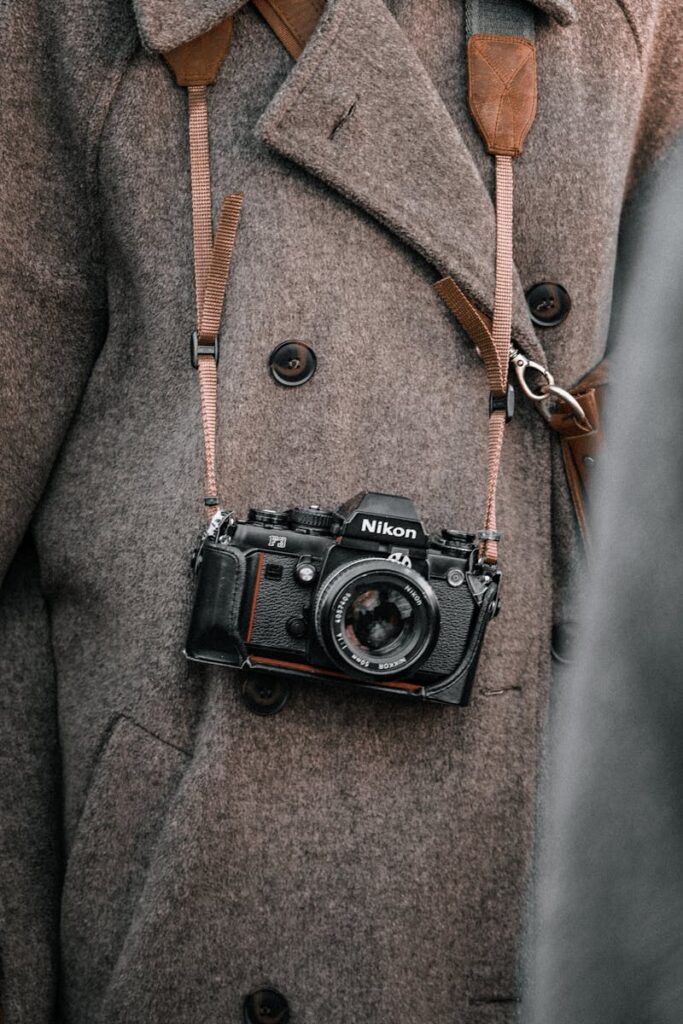
12. **Coat Button Camera**The miniaturization of photographic technology was a cornerstone of Cold War espionage, culminating in incredibly discreet devices like the coat button camera. This innovative gadget transformed an ordinary clothing button into a high-tech surveillance tool, allowing agents to capture photographs secretly without drawing any attention. It represented a sophisticated understanding of blending advanced optics into the most common elements of everyday attire, ensuring unparalleled stealth in visual intelligence gathering.
Developed to be indistinguishable from a regular button, these cameras contained a tiny lens, often concealed within a faux stitch or a cleverly designed aperture. The operative would typically have a remote trigger in a pocket or integrated into another piece of clothing, enabling them to snap pictures at critical moments. This allowed agents to discreetly document individuals, confidential documents, or sensitive locations in public or private settings, all under the guise of casual presence.
The tactical advantage of a coat button camera was immense. Instead of attempting to steal or painstakingly copy documents, an agent could simply photograph them, leaving the originals undisturbed and ensuring that no one would know information had been compromised or even that an operative had been present. This method significantly reduced the risk of detection and simplified the process of intelligence acquisition.
This gadget showcases the relentless drive towards making surveillance invisible, literally integrated into the fabric of daily life. It signifies a profound shift in covert operations, moving away from bulky equipment towards elegantly concealed tools that allowed spies to act as invisible observers. The coat button camera remains an iconic symbol of how Cold War ingenuity redefined the possibilities of photographic espionage, making every button a potential eye.
Read more about: Unlock Your Smartphone’s Full Potential: 15 Essential Photography Tricks for Everyone

13. **Pigeon Camera**In a surprising twist of espionage ingenuity, the Cold War saw the deployment of “pigeon cameras,” turning ordinary birds into unexpected aerial reconnaissance assets. This rather ingenious, if somewhat whimsical, method involved attaching lightweight, miniature cameras to pigeons, leveraging their natural ability to fly undetected over sensitive areas. It was a prime example of repurposing readily available resources for high-tech intelligence gathering, offering a unique solution to aerial surveillance challenges.
The CIA, recognizing the potential, developed these specialized cameras, designed to be small and light enough not to impede the bird’s flight. These devices were capable of capturing detailed images from a few hundred feet, providing valuable intelligence from perspectives that might be otherwise inaccessible to human agents or larger, more detectable aircraft. The birds could be released from a distance and guided, or simply allowed to fly over a target area, taking sequential photographs.
Operational advantages were clear: pigeons could fly close to targets unnoticed, blending seamlessly into urban or rural environments. They bypassed ground-level security and offered a low-cost, low-risk alternative to human infiltration or the then-nascent drone technology. The images they brought back provided critical insights into enemy installations, troop movements, or infrastructure, contributing significantly to strategic intelligence portfolios.
The pigeon camera stands as a fascinating testament to the creative problem-solving prevalent during the Cold War. It exemplifies how intelligence agencies were willing to explore unconventional means, even animal assets, to gain an informational edge. This blend of biological and mechanical innovation highlights a period where every avenue, no matter how extraordinary, was considered in the relentless pursuit of information and strategic dominance, literally employing creatures of the sky as silent spies.
Read more about: Danny Thompson: A Legacy of Innovation – The Bassist Who Redefined Folk and Jazz, and Enriched a Generation of Music
As our exploration concludes, it’s clear that the Cold War was not just a clash of ideologies and military might, but a grand theater of technological innovation. From the lightning-fast transformations offered by the 5-second mask to the silent aquatic reconnaissance of Charlie the Robot Fish, these gadgets were more than mere tools; they were the physical embodiment of an era defined by secrets, ingenuity, and a relentless pursuit of strategic advantage. Each device, now a fascinating relic, tells a story of human ambition, technological brilliance, and the harrowing realities faced by those who operated in the shadows. The ingenuity displayed in these simple yet transformative gadgets continues to captivate us, reminding us of a time when the world held its breath, and a single, well-placed piece of technology could tip the scales of global power. Their legacy endures, not just in museum exhibits, but in the continuing fascination with how technology shapes our world, blurring the lines between the mundane and the profoundly strategic.



